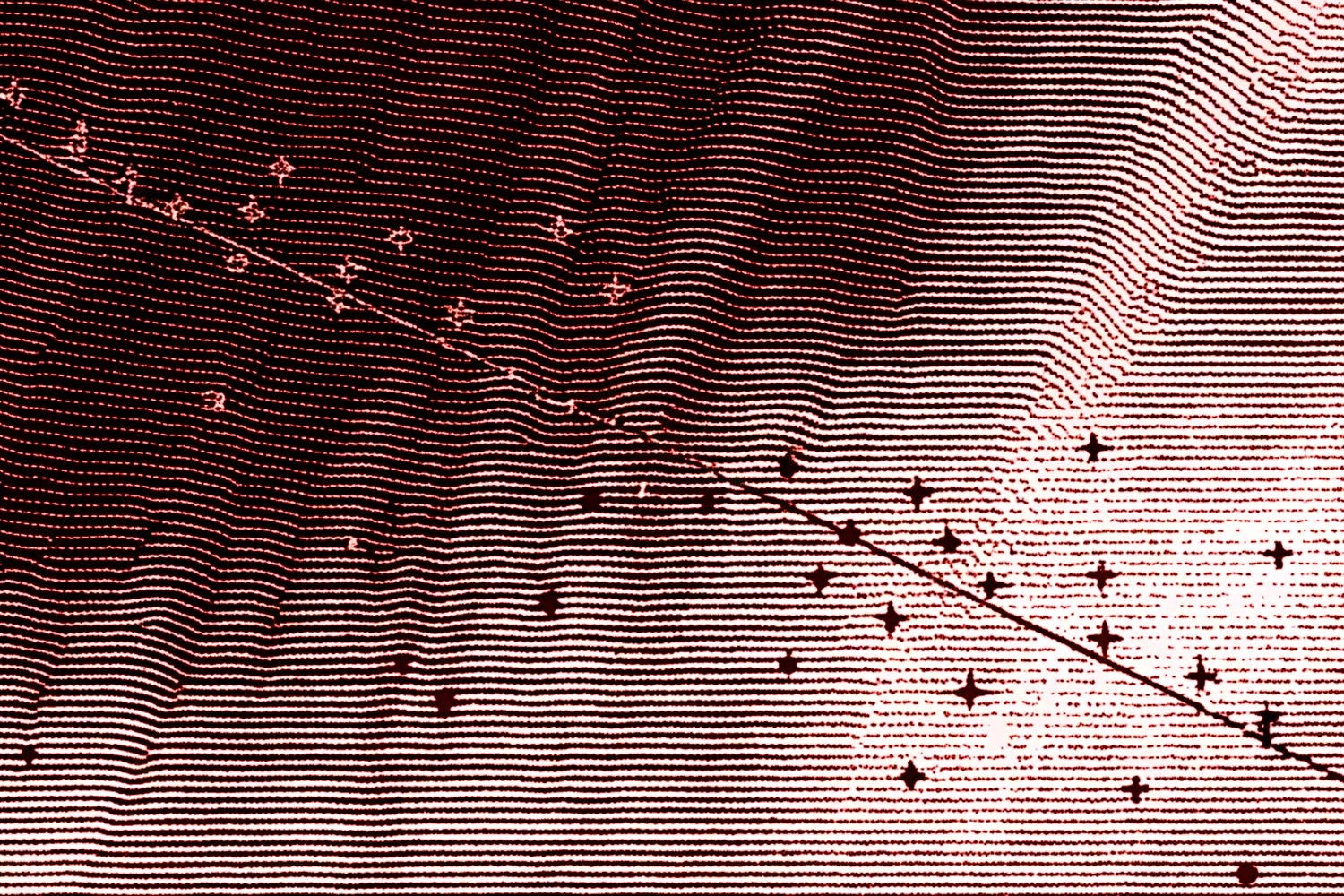

🎓 27/2
This post is a part of the Classification basics & ensembling educational series from my free course. Please keep in mind that the correct sequence of posts is outlined on the course page, while it can be arbitrary in Research.
I'm also happy to announce that I've started working on standalone paid courses, so you could support my work and get cheap educational material. These courses will be of completely different quality, with more theoretical depth and niche focus, and will feature challenging projects, quizzes, exercises, video lectures and supplementary stuff. Stay tuned!
Logistic regression is a cornerstone technique in supervised machine learning for tackling binary classification tasks. Although it is called a "regression," it is used primarily for classification, making it a prime example of how linear models can be adapted to classify data. Historically, linear models have been central to both statistics and machine learning (e.g., Nelder and Wedderburn's work on generalized linear models in 1972), and logistic regression stands as one of their most widely recognized forms in predictive analytics.
In a typical classification setting, we have data points represented by feature vectors and an associated label . Our goal is to learn a function that can correctly map new, unseen to a label 0 or 1. For a linear model, one might initially think of extending linear regression by simply thresholding its output. However, such a direct approach can produce values outside the range and is not ideally suited for probability estimation.
This is where logistic regression enters the scene: it transforms the output of a linear function into a probability via the logistic (sigmoid) function, ensuring that the output always lies within . Although the resulting decision boundary is still linear in the input space, this probability-based interpretation is extremely powerful.
Nonetheless, logistic regression does have certain limitations, especially when dealing with complex, highly non-linear decision boundaries. Newer, more flexible models (e.g., kernel-based SVMs, neural networks) can capture richer representations. Still, logistic regression remains popular due to its interpretability, low computational cost, and the natural probabilistic interpretation of its outputs.
Intuition behind logistic regression
Transition from linear regression to logistic regression
If we take a naive step from linear regression to classification by simply saying "output class 1 if exceeds some threshold," we run into problems of interpretability and unbounded outputs. While linear regression tries to fit:
,
this value can exceed 1 or be negative, so it is not a valid probability. Logistic regression solves this by mapping the linear output to the interval .
The sigmoid function
The heart of logistic regression is the sigmoid (a.k.a. logistic) function:
,
where .
- For large positive (i.e., ), approaches 1.
- For large negative (i.e., ), approaches 0.
Thus, the sigmoid neatly squeezes any real value into the range, making it suitable as an estimated probability .

An image was requested, but the frog was found.
Alt: "Sigmoid function plot"
Caption: "The sigmoid function <Latex text='S(z) = 1/(1 + e^{-z})'/> always outputs a value in [0,1]."
Error type: missing path
Log-odds interpretation
One of logistic regression's most appealing characteristics is its direct log-odds interpretation. Specifically:
where is the predicted probability that . The left-hand side is called the "log-odds" or "logit." This means a one-unit change in a particular feature corresponds to an additive shift in the log-odds by , making the model coefficients directly interpretable in terms of odds ratios.
Comparison to other classification methods
While advanced classifiers — such as random forests, gradient boosting, or neural networks — often outperform logistic regression in highly complex tasks, logistic regression's simplicity and interpretability remain key advantages. In regulated industries like healthcare or finance, understanding why a model makes a certain decision is sometimes paramount, and logistic regression is often more transparent than black-box models.
Cost function and log loss
Because logistic regression outputs probabilities, a suitable loss function should heavily penalize wrong predictions made with high confidence. The most common choice is the cross-entropy loss, also known as log loss in the binary setting:
where is the number of training samples, is the predicted probability , and is the true label in \{0,1\}.
Interpretation of terms:
- : If the true label is 1, we want to be close to 1 to avoid a large penalty.
- : If the true label is 0, we want to be near 0.
Because the logarithm grows large in magnitude (negatively) as approaches 0, the model is heavily penalized for confident but incorrect predictions. Log loss is convex in terms of and , making it more tractable to optimize than many other losses.
Parameter estimation
Gradient descent approach
A widely used method to find optimal parameters that minimize the log loss is gradient descent. We iterate:
where is the learning rate, and and are computed based on the cross-entropy loss. For each sample , we have:
,
and
Each update step moves and in the direction that locally decreases the loss.
Newton's method and other optimization techniques
For logistic regression, the cross-entropy loss has a nice structure that can also be tackled by second-order optimization methods, such as Newton's method. Newton's method uses curvature information (the Hessian matrix) to converge in fewer steps, though each step can be more computationally expensive. Libraries like statsmodels (in Python) often implement this approach, giving very precise parameter estimates.
Other methods include quasi-Newton approaches (e.g., L-BFGS) or coordinate descent (especially when regularization is involved). In practice, both first-order (gradient descent variants) and second-order methods can be effective depending on dataset size and constraints.
Convergence and computational considerations
- Learning rate (): Too large can cause divergence; too small can slow convergence.
- Number of features (): When is massive, specialized optimizers or mini-batch gradient methods can improve performance.
- Batch vs. stochastic updates: In large-scale problems, we often use stochastic gradient descent (SGD) or mini-batch SGD for efficiency and faster iteration cycles.
Properties of logistic regression
Probabilistic interpretation
A prominent appeal of logistic regression is its ability to produce probabilities. Rather than merely classifying samples as 0 or 1, the model outputs — the probability of belonging to the positive class — enabling well-calibrated decision rules. This is useful in domains (e.g., medical diagnosis) where you might need to act on a predicted probability instead of a hard label.
Decision boundaries and interpretability
Despite producing probability estimates, the final classification boundary in logistic regression is still linear: it is the set of such that . Points on one side of the hyperplane yield probabilities above 0.5, and on the other side, below 0.5.
Logistic regression remains one of the most interpretable classifiers:
- Coefficients : Show how each feature contributes to the log-odds of the outcome.
- Intercept : Shifts the decision boundary globally.
Overfitting and the role of regularization (L1, L2)
When the number of features is large compared to the number of samples, logistic regression can overfit. Regularization combats this by penalizing large parameter values:
- L2 regularization ( \|\!w\|\!_2^2 penalty) tends to shrink coefficients smoothly, often used in practice (a.k.a. "Ridge" regularization).
- L1 regularization ( \|\!w\|\!_1 penalty) promotes sparsity, driving some coefficients exactly to zero ("Lasso" style).
Regularization affects both interpretability (L1 can yield sparse models that are easier to interpret) and the shape of the decision boundary.
Feature scaling and its impact
Because logistic regression is sensitive to the relative scale of features, applying standardization or normalization typically accelerates convergence. This is especially relevant if gradient-based methods are used. Feature scaling ensures all features contribute comparably to the loss gradient, preventing large-scale features from dominating the learning process.
Multiclass logistic regression
Although logistic regression was originally formulated for binary classification, there are straightforward methods to extend it to multi-class problems.
One-vs-all (OvA) strategy
Sometimes called "one-vs-rest," the OvA strategy trains a separate binary logistic classifier for each class by labeling all samples in class as 1 and all others as 0. For an -class problem, you end up with classifiers. A new sample is assigned to the class whose corresponding classifier outputs the highest probability.

An image was requested, but the frog was found.
Alt: "One-vs-all classification"
Caption: "Each class receives its own binary classifier distinguishing that class from the rest."
Error type: missing path
One-vs-one (OvO) strategy
In one-vs-one, a separate classifier is trained for every pair of classes. For classes, this leads to classifiers. When predicting, each pairwise classifier "votes" for one of the two classes it distinguishes, and the final class is the one with the most votes. This approach can be more efficient if your data is balanced among classes, but it can become cumbersome when is large.
Softmax (multinomial logistic regression) approach
Alternatively, the multinomial logistic regression (also called "softmax regression") generalizes the sigmoid to multiple classes by computing an exponentiated linear score for each class:
This approach uses a cross-entropy loss over all classes simultaneously. It is elegantly handled by many machine learning libraries (e.g., scikit-learn's LogisticRegression with multi_class='multinomial').
Applications and practical tips
Logistic regression is ubiquitous across industries due to its reliability, interpretability, and relative ease of training. Common examples include:
- Customer churn prediction: Estimating the probability that a customer will stop using a service.
- Medical diagnosis: Predicting the probability of having a certain disease based on biomarkers and patient history.
- Credit scoring: Assessing the likelihood of default.
When working with logistic regression in practice, keep these tips in mind:
- Data preprocessing: Clean your data and scale numeric features. Deal with missing values appropriately.
- Regularization: Use or to avoid overfitting, especially with many features.
- Imbalanced datasets: If your positive class is rare, consider oversampling, undersampling, or using class-weight adjustments.
- Interpretability: Logistic regression coefficients are straightforward to interpret, but consider advanced explainability methods (e.g., SHAP, LIME) if needed for more complex use cases.
Simple Python implementation example
Below is a very basic illustration of how one might implement logistic regression "from scratch" in Python using batch gradient descent. In practice, libraries such as scikit-learn, statsmodels, or PyTorch/TensorFlow are preferred for efficient and robust implementations.
<Code text={`
import numpy as np
def sigmoid(z):
return 1 / (1 + np.exp(-z))
def compute_loss_and_gradients(X, y, w, b):
m = X.shape[0]
# Predicted probabilities
z = X.dot(w) + b
p = sigmoid(z)
# Cross-entropy loss
loss = -np.mean(y * np.log(p) + (1 - y) * np.log(1 - p))
# Gradients
dw = (1/m) * X.T.dot(p - y)
db = np.mean(p - y)
return loss, dw, db
def train_logistic_regression(X, y, lr=0.01, num_iters=1000):
np.random.seed(42)
w = np.random.randn(X.shape[1]) * 0.01
b = 0.0
for i in range(num_iters):
loss, dw, db = compute_loss_and_gradients(X, y, w, b)
w -= lr * dw
b -= lr * db
if i % 100 == 0:
print(f"Iteration {i}, Loss: {loss:.4f}")
return w, b
# Example usage:
# X_train, y_train = ... # Load or generate data
# w, b = train_logistic_regression(X_train, y_train, lr=0.1, num_iters=1000)
# print("Trained weights:", w)
# print("Trained bias:", b)
`}/>In this small script:
- sigmoid implements .
- The function compute_loss_and_gradients calculates the cross-entropy loss and its gradients.
- train_logistic_regression iteratively updates parameters and using gradient descent.
Logistic regression's simplicity keeps such implementations concise and readable.
You now have a deeper, more theoretical understanding of logistic regression: from its origins as a linear classifier with a probabilistic twist, through the details of the cost function, up to its optimization, properties, and multi-class extensions. Logistic regression remains a mainstay in modern data science and machine learning pipelines — especially for interpretable, moderate-scale problems where a straightforward, well-grounded model is invaluable.


